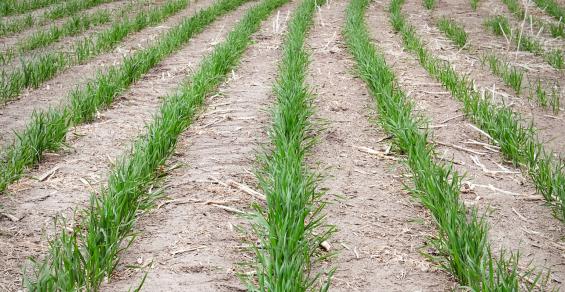They come like clockwork in the fall from their summer homes in the Rocky Mountains to the west. Army cutworm moths, or miller moths, start their migration into western Kansas in September, timing their arrival for newly planted wheat to emerge and provide the moths a ready food source.
This year, Kansas State University Extension entomologists are warning of “noticeable numbers” of army cutworm moths making the state’s wheat crop their buffet this fall. And these high numbers could also spell trouble next spring, as their young hatch and start to feed on the crop emerging from winter dormancy.
Life cycle
Anthony Zukoff, entomology Extension associate at the Southwest Research and Extension Center, Garden City, Kan., writes about army cutworm moths in the Oct. 27 Agronomy eUpdate. He says since the first week of September, more than 2,000 moths have been collected in pheromone traps at one location in Finney County. “Trap counts of 800 or more moths in an area through October may indicate significant caterpillar activity the following spring,” he writes.
While the peak flight of these pest was around the second week of October, there’s still ample opportunity for them to harm wheat, he writes.
Active females will lay eggs on the soil surface of freshly cultivated, weedy or newly seeded winter wheat fields, Zukoff says — each one laying up to 1,000 eggs or more. Those eggs will hatch, and those caterpillars will feed on young wheat seedlings until cold forces them underground.
“However, it is possible for them to resume feeding on warmer winter days,” he writes. Those caterpillars will continue to grow until they emerge in the following late spring, and then they’ll migrate back to their summer mountain home until it’s time to repeat the process next fall.
Advice
Zuckoff offered these key points for farmers to remember:
Start scouting. Get into growing wheat fields now for windowpane damage caused by very small caterpillars. And return to scout during any warm periods from February to April.
Drought-stressed fields. Stressed plants are particularly susceptible to damage with just one to two caterpillars per square foot. The normal treatment threshold is four to five per square foot, with well-tillered fields in good condition tolerating up to 10 per square foot without yield loss.
Alfalfa, too. Watch those alfalfa fields while you’re at it. Army cutworms can feed on them from January into April. And if you’re seeding in a new stand, it’s especially critical to scout. Just two caterpillars per square foot is the threshold for seedlings, while older stands can withstand four or more caterpillars per square foot.
To learn more about army cutworm control methods, visit the K-State Research and Extension bookstore.
Scout wheat fields now to prepare for pests next spring.



